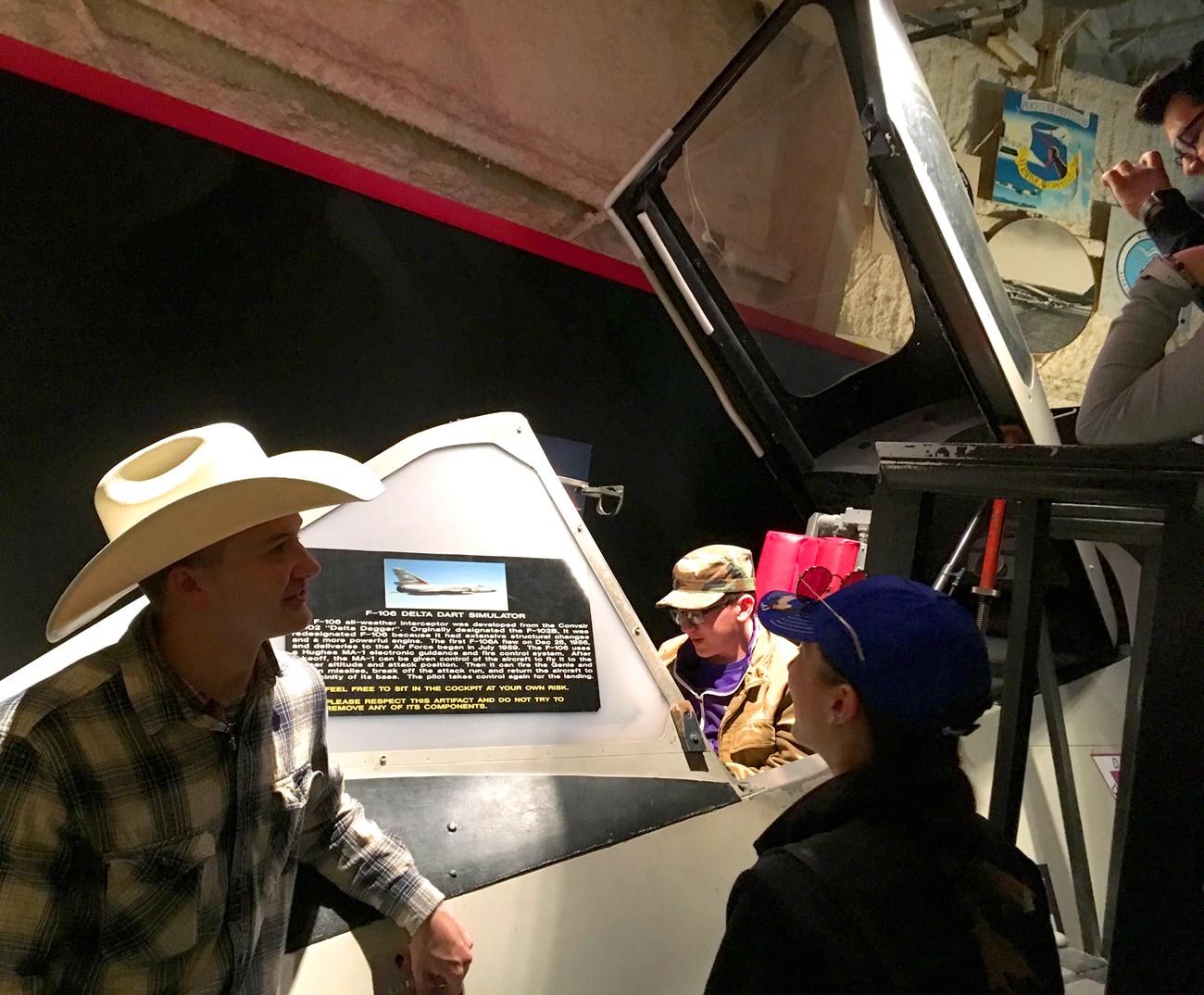Last updated: October 20, 2020
Article
JROTC Students Visit Minuteman Missile National Historic Site

NPS Photo
The high school students were encouraged to complete independent research on topics that they felt were relevant to them and important to Minuteman Missile’s narrative. While many of the nation’s park units have ties to Cold War history, Minuteman Missile is the only one with a main interpretive focus on this particular American story. Once the students arrived, they received an energetic tour of the site by Chief of Interpretation Joe Brehm, which included the historic silos that once housed nuclear missiles. Minuteman Missile’s Superintendent Eric Leonard also spoke to the students about music and pop culture influenced by the Cold War, expanding upon the greater cultural ramifications in a unique way.
After completing the park programs, the Omaha-based JROTC high school students shared their five-minute presentations on related military topics that sparked their interest including military conflicts, protests, and key individuals. While these topics related to Minuteman Missile, the presentations also gave the students the opportunity to expand on underrepresented stories that are not present at the site’s dominant narrative. After each presentation, park staff and college students from the University of Wisconsin La Crosse (UW-La) were given the chance to ask questions to spur educational engagement. Under guidance by Prof. Melissa Collum, the UW-La students were encouraged to use this trip to gain experience teaching outside of the walls of a conventional classroom.

NPS Photo
A different style and approach to teaching than what many of the military students were used to, one high school student enthusiastically responded after activities that, “I really liked that when we got to answer questions, we were never told that we were wrong. The conversation was never shutdown. It made me want to participate more and keep learning… This was not only fun and interesting, but something we won’t forget.”
In addition to these planned activities, all of the students were able to make the most of the South Dakota Black Hills by visiting surrounding sites like Badlands National Park, Mount Rushmore National Memorial, South Dakota Air and Space Museum, and Crazy Horse Memorial. Perhaps more importantly, these side trips allowed for the high school and college students to break the ice and build a rapport they could later use to learn together.

NPS Photo.
